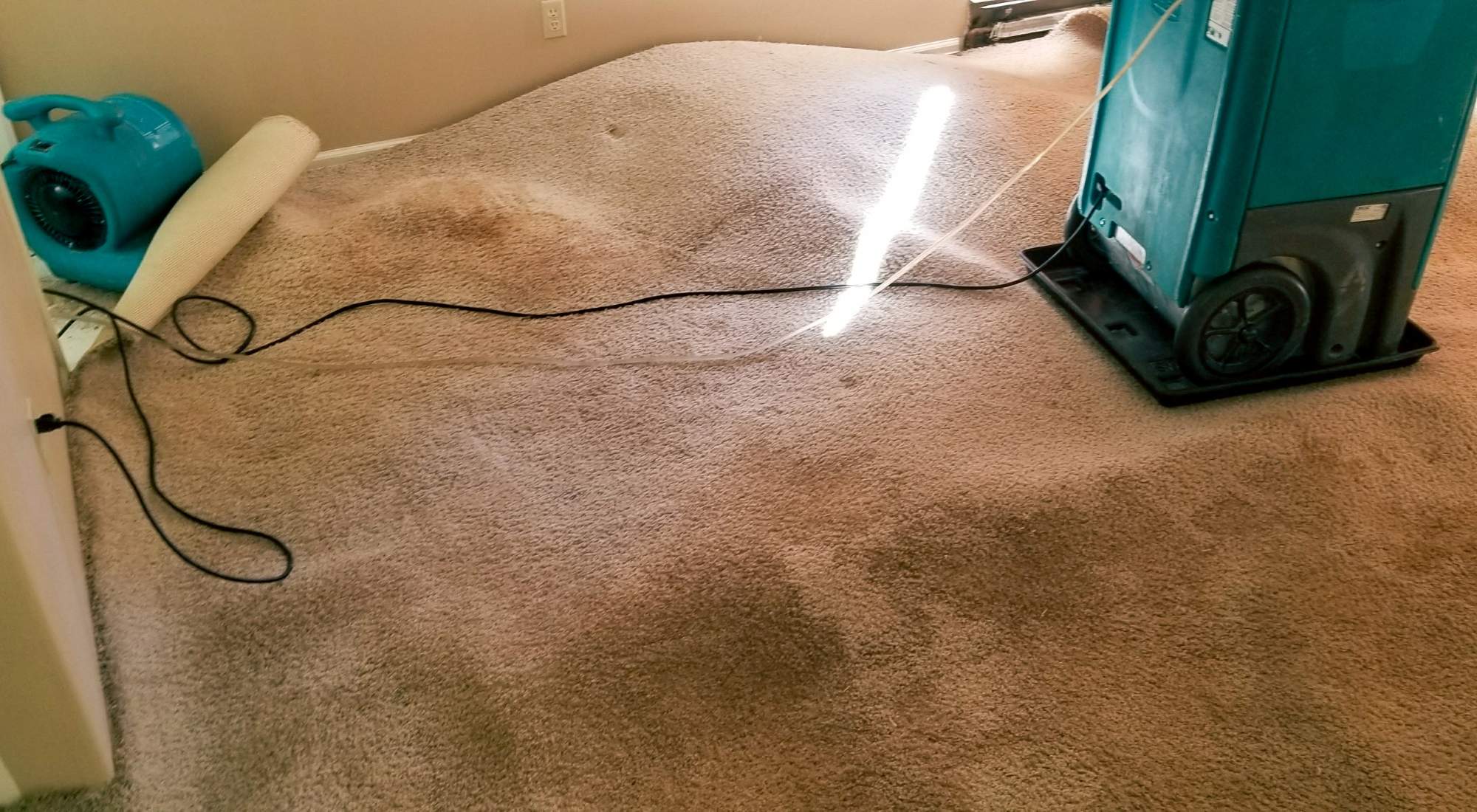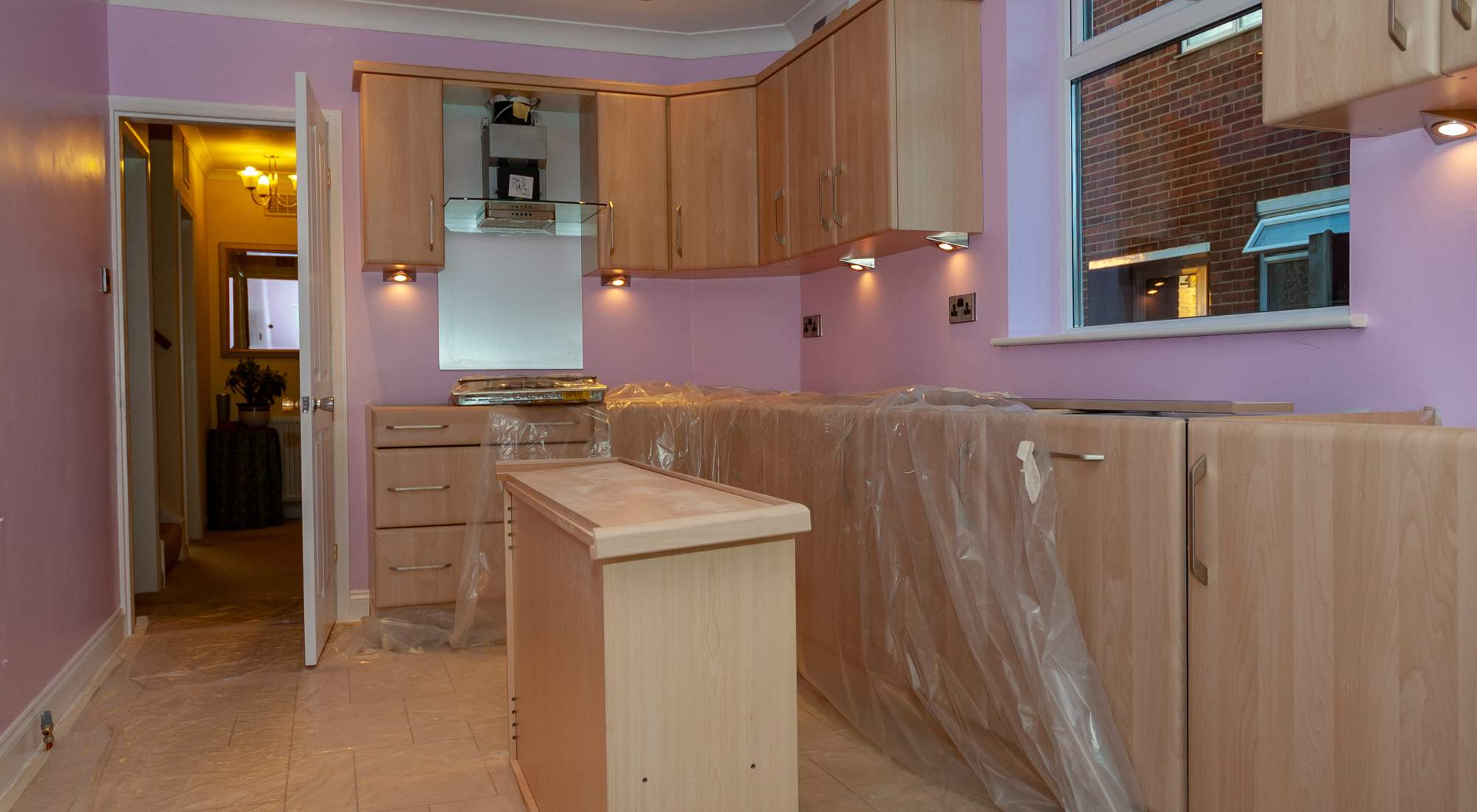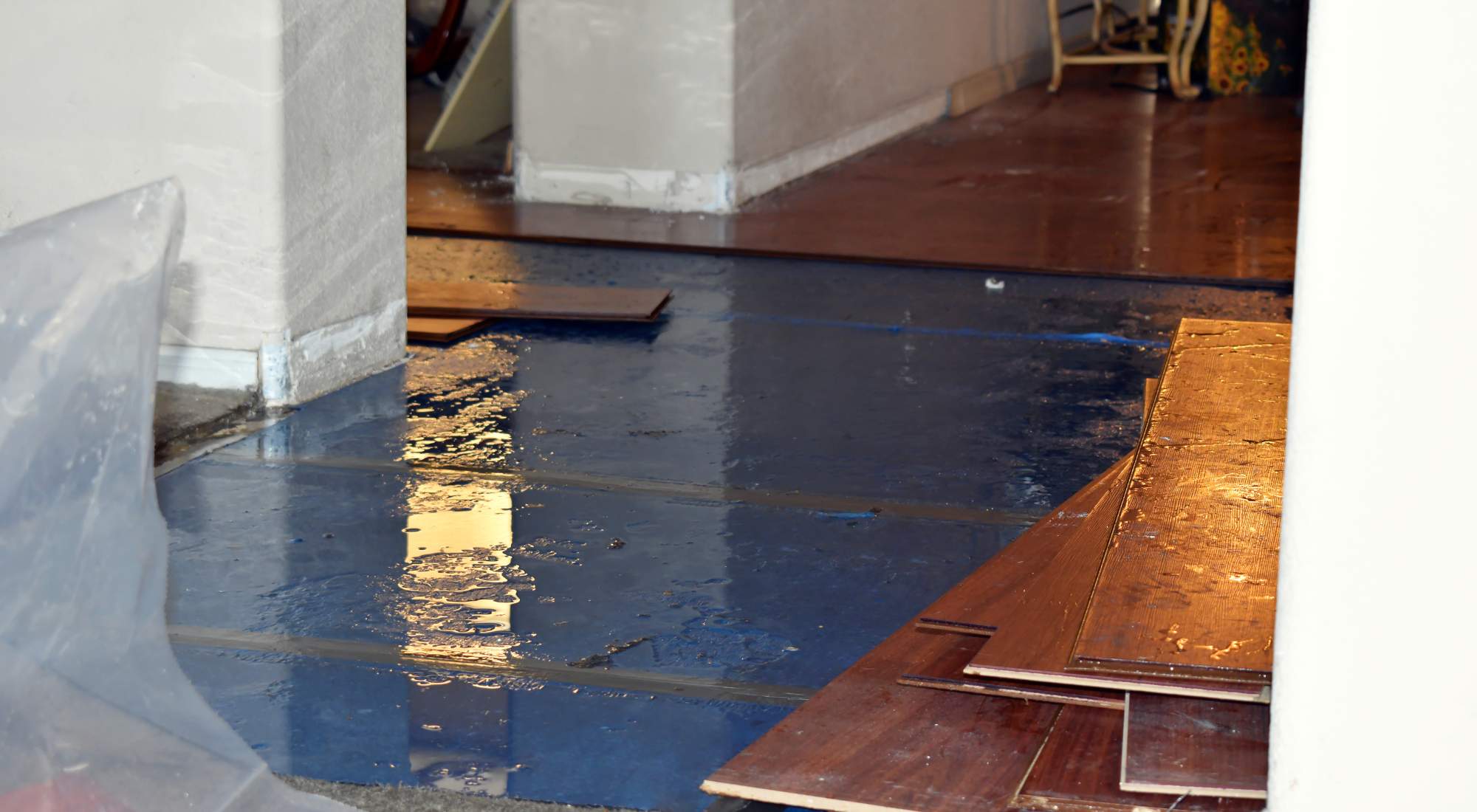Preparing for the unforeseen is a bit of an oxymoron – but when disaster strikes, it’s the immediate response that can dictate the level of further damage sustained.
When you’re in reaction mode, however, it can be overwhelming to try and decipher the difference between the mitigation process and the restoration process.
Read on to learn the crucial distinction between mitigation vs. restoration processes, unveiling how they work together to safeguard homes and businesses.
Table of Contents
- Mitigation Vs. Restoration: Defining the Terms
- The Importance of Knowing the Difference Between Mitigation and Restoration and Why You May Need Both
- How To Know When To Call a Mitigation Specialist
- 5 Common Misconceptions About Mitigation and Restoration
- Pure Environmental’s Mitigation and Restoration Services
- Mitigating Damage and Restoring Your Home Using Pure Environmental PurAyr™ Technology

Mitigation Vs. Restoration: Defining the Terms
You’re not alone if you’re one of the many people who confuse these terms or think they refer to the same service. In reality, they do not. Mitigation and restoration are different services that each play different roles in getting things back in order after a home has sustained damage.
Mitigation often acts as the first line of defense, designed to minimize further damage after a disaster, while restoration steps in later to bring your property back to its pre-disaster glory.
In summary, while mitigation in emergency home services involves immediate actions to minimize damage and risks during an emergency, restoration focuses on the longer-term process of repairing and restoring the property to its pre-damage condition once the immediate threat has been addressed.
Both mitigation and restoration are essential components of emergency response and recovery efforts for homeowners facing unexpected disasters or emergencies.
While mitigation and restoration seem similar, they occur at different stages of the recovery process. Knowing the definitions is important to understand the processes of both and why they are equally necessary.
Mitigation Definition
Mitigation is defined as the process or result of making something less severe, dangerous, painful, harsh, or damaging.
In the context of emergency mitigation services, mitigation — or remediation — aims to limit and minimize any damage from getting worse.
At the root of mitigation, you stop whatever the issue is and take immediate steps to prevent further damage after a disaster.
Mitigation Example
Let’s say your home suffered a leak due to a burst pipe in one of your kitchen walls.
The emergency mitigation process might involve:
- Turning off the water
- Water extraction
- Diverting the flow of water
- Cutting and opening up the drywall
- Reinforcing any damaged structures
- Removing flooring, cabinetry, trim etc.
- Putting drying equipment in and drying the room out; and
- Having a plumber come in to fix the burst pipe
Restoration Definition
The focus of restoration is to repair and restore a property to its pre-disaster condition.
During the restoration process, an expert may assess the damage, clean and repair any and all affected areas, and replace what needs to be replaced. Depending on the cause and extent of the damage, this might involve structural repairs, electrical rewiring, carpet replacement, or repainting.
Essentially, restoration nods to the process of putting things back the way they were before the emergency.
Restoration Example
Keeping our same frame of reference that we’re responding to a leak due to a burst pipe in a kitchen wall, the restoration process might entail:
- Repairing plumbing leaks
- Reinstalling drywall, cabinetry, trim, flooring
- Completing finish work; and
- Repainting

The Importance of Knowing the Difference Between Mitigation and Restoration and Why You May Need Both
After a disaster, in order to keep the damage as minimal as possible, both mitigation and restoration will be essential.
Mitigation will essentially “stop the bleeding,” but a home will not be back to normal until after restoration is complete.
After mitigation, a home may have no water, no sink, no flooring, drywall, etc., depending on the damage sustained during the disaster.
Mitigation vs. restoration will also affect the insurance process and how much money you receive for a claim. While some insurances may cover both processes, some only cover mitigation, while others only cover restoration.
Mitigation and restoration insurance claims are separate. As a homeowner, you can complete emergency mitigation services as soon as possible and your contractor can supply documentation to your insurance company after. Because mitigation is done to stabilize the home and stop the issue from worsening, it’s essential to complete this quickly.
Before beginning the restoration phase of the process, you’ll need to supply your insurance company with a repair estimate. This ensures you have established a scope of work and a repair value has been agreed to before any work is completed.
Traditional remodeling contractors don’t have the skills or experience to negotiate with insurance companies for restoration projects, which could leave you paying more out of pocket. The experts at Pure Environmental will work with your insurance adjuster to help you restore your house back to your home.
How To Know When To Call a Mitigation Specialist
In short, if your home has a problem, the sooner the better.
Calling a mitigation service right away can stop further damage from happening, which can help save time and money in the long run.
Signs Your Home Has Sustained Water Damage
Even if you can’t hear or see the water flowing, there will be signs that your home likely sustained water damage — look for a smell, keep an eye out for any water leakage on the floor or wall, or any actual mold growth.
If you spot any of these potential signs of damage, it’s time to call in the pros:
- Water stains
- Musty odors
- Peeling or bubbling paint or wallpaper
- Warped or buckling floors
- Sagging ceilings or walls
- Visible mold growth
- Persistent dampness or moisture
- Changes in your water meter
- Visible leaks or drips
- Higher than normal water bills
In the case of a recent client, a renter complained of a mildew-type smell. In response, the owner had drywall cut out only to find an excess of moisture. The owner called in a plumber to have the plumbing fixed and then called Pure Environmental for emergency mitigation services.
At 3-4 weeks after the damage was done, flooring and cabinets needed to be removed because of mold. Because this was still the mitigation phase, the renters had no water, no sink, no flooring, drywall, etc.
When To Call in a Professional and Why
A mitigation specialist should be called in as soon as or at the same time as the plumber.
In the case mentioned above, had Pure Environmental been consulted sooner, water clean-up could have been expedited, helping to lessen the damage and perhaps avoiding the replacement of flooring, cabinets, and drywall.
In short, if caught early, you can fix a problem without letting it escalate into an emergency.
It’s important to note, however, that finding the problem sooner won’t necessarily mean any professional work is lessened, but it may mean continued use of some things (flooring, cabinets, etc.) without the need to replace them, which can save a homeowner thousands of dollars.
If your home has sustained water or fire damage, it’s essential to understand that mitigating the problem is only the first step of the solution. Once you’ve put a stop to the initial problem, you’re then left with repair and remodeling needs handled during restoration.

5 Common Misconceptions About Mitigation and Restoration
#1: Addressing Condensation on the Windows Is an Emergency
If the temperature is cold outside and warm inside, you may see condensation build-up on windows (think of a glass of ice with water on the outside). Although it’s common to see mold growth on window sills, it’s actually not an indicator of a mold or moisture problem — it’s a sign of an airflow problem.
This condensation demonstrates there’s not enough airflow to take the moisture out of the house, or that the window might be older or have an aluminum frame that is more likely to collect moisture. These issues are usually just surface issues that require surface treatment (i.e. not tearing anything out), and do not constitute a typical “emergency.”
That said, the definition of an “emergency” is in the eye of the beholder — to a renter who has a sensitive mold allergy, it may be an emergency, but to another, it may not be.
#2: Mold in the Attic or Crawl Space Is a Moisture Issue
In areas of the home where air is not conditioned (resulting in air that is not the same temperature as it is in your house) may often lead to mold.
While this is a more common issue, it should still be treated. The root cause is often airflow, not moisture issues, and also does not usually constitute an emergency.
#3: Mitigation and Restoration Are More Expensive Than Replacement
It makes sense why many homeowners may jump to the conclusion that replacing materials or a home’s structure is the more cost-effective route. In reality, an emergency mitigation and restoration company can often clean and salvage your home for less.
An experienced restoration company will understand which materials must be replaced and which ones are salvageable, and, in the case of Pure Environmental, will work with the insurance company to quickly provide you with a quality restoration.
#4: DIY Mitigation and Restoration Is Cheaper Than Calling in the Pros
While some DIY projects are safe for the average homeowner, the majority of the time mitigation or restoration aren’t.
A poor repair can actually wind up costing a homeowner more money (and time) in the long run.
Moreover, the Centers for Disease Control and Prevention (CDC) cautions that the task of cleaning up mold may be too difficult or dangerous to attempt alone.
#5: Carpets Can Dry Out on Their Own
This one is a misconception for a reason — you can leave laundry out to dry, so why not give walls and carpets time to air dry?
Unlike our clothing, carpets, furniture, and drywall can trap moisture deep within their materials, creating the perfect place for mold to grow.
The only way to ensure the damaged property is completely dry and safe to live in is with professional equipment.
Pure Environmental uses PurAyr™ — a powerful air and surface decontamination tool designed to safely eradicate odors, bacteria, and volatile organic compounds from indoor environments.
It’s residue-free, environmentally sound, and offers excellent material capability (including sensitive electronics, leather, and antiques).
Pure Environmental’s Mitigation and Restoration Services
4 Types of Mitigation Services
Disaster can strike at any time and has no consideration for your daily life.
At Pure Environmental, our knowledge, skills, customer service, and environmentally friendly approach are well-known and appreciated by customers who have used our emergency mitigation services, which include:
- Water damage mitigation: Including leaks, floods, burst pipes, sitting water, and more.
- Fire damage mitigation: We’re equipped to effectively support fire damage restoration efforts through smoke removal and other fire contamination removal.
- Mold mitigation: Mold is no stranger to the PNW thanks to our rainy days. Our mold remediation process will help you breathe easier.
- Tear gas and other decontamination mitigation: Rest assured your home is a safe and healthy environment with an inspection followed by a thorough cleaning and decontamination.
Pure Environmental’s Restoration Process
During the restoration process, our experienced team at Pure Environmental will:
- Survey the damage
- Provide you with an estimate for repairs or remodeling services
- Work with the insurance company to quickly provide you with a quality restoration
Because the insurance process during restoration can add to the confusion for homeowners, the professionals at Pure Environmental are prepared to be your spokesperson when your insurance should cover your home restoration work.
Mitigating Damage and Restoring Your Home Using Pure Environmental PurAyr™ Technology
At Pure Environmental, we’re proud to offer PurAyr™ as part of our comprehensive environmental services.
PurAyr™ eliminates odors and reduces allergens, creating a clean and fresh indoor environment, and ensuring the indoor air quality of your space is at its best — even after a construction project.
At Pure Environmental, we’re committed to providing you with the highest level of service and quality workmanship. Our crew is highly trained and fully insured, and our work sets us apart in terms of the:
- Quality of service we provide.
- Technologies we employ.
- Innovative services we offer.
Contact us to learn more about our mitigation and restoration services or request a free estimate today.
Recent posts
- Advice From the Pros: How To Hire a Contractor for Home Renovations
- After the Fire: What To Expect From Smoke Damage Restoration Services
- Home Insurance During Renovations: What Is Covered and What To Know Before Getting Started
- Mitigation and Restoration: Understanding the Difference Between the Two and Why They’re Both Necessary
- Should You Stay or Should You Go? Know When To Walk Away From a House With Mold
